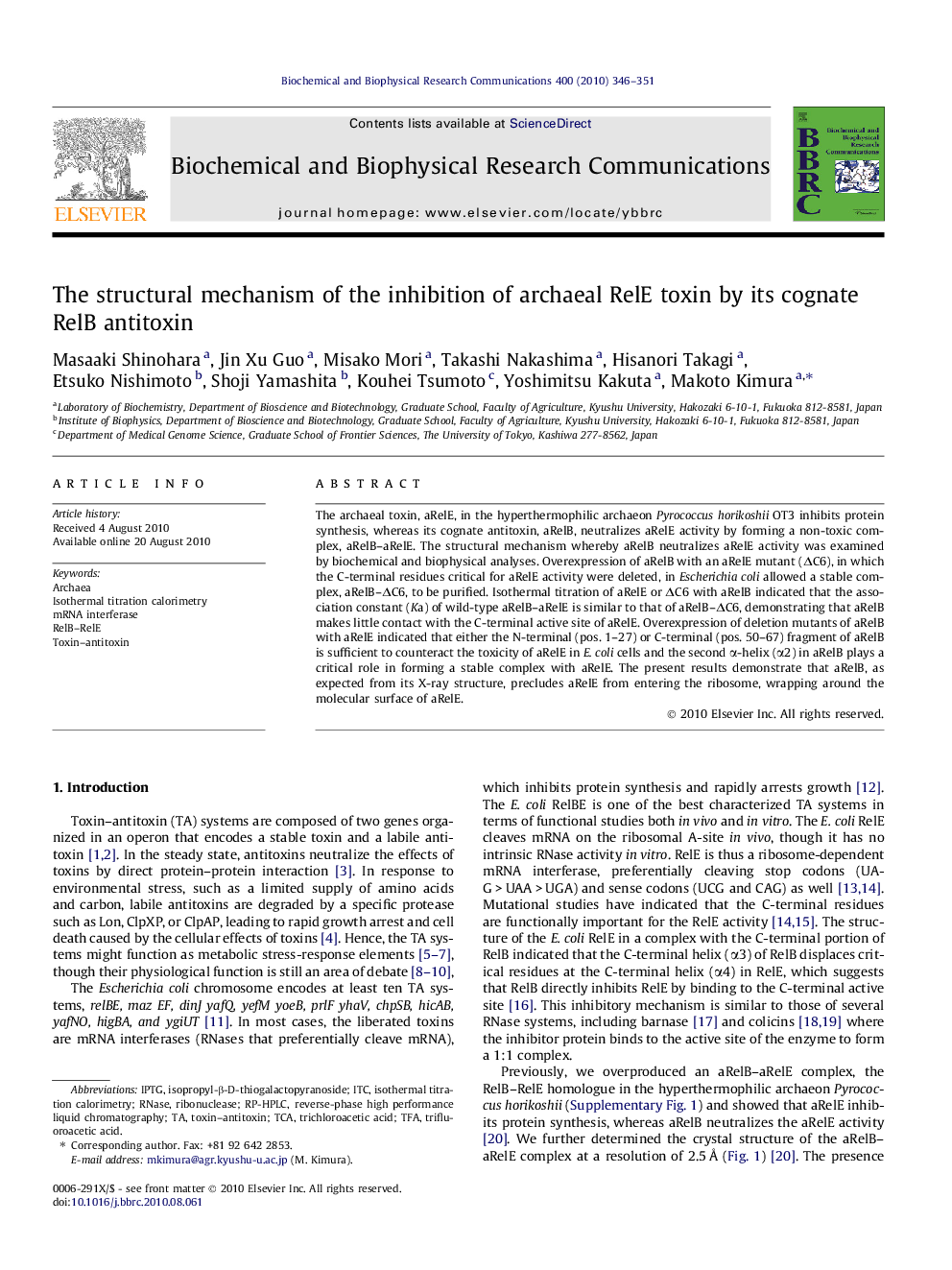| Article ID | Journal | Published Year | Pages | File Type |
|---|---|---|---|---|
| 1931481 | Biochemical and Biophysical Research Communications | 2010 | 6 Pages |
The archaeal toxin, aRelE, in the hyperthermophilic archaeon Pyrococcus horikoshii OT3 inhibits protein synthesis, whereas its cognate antitoxin, aRelB, neutralizes aRelE activity by forming a non-toxic complex, aRelB–aRelE. The structural mechanism whereby aRelB neutralizes aRelE activity was examined by biochemical and biophysical analyses. Overexpression of aRelB with an aRelE mutant (ΔC6), in which the C-terminal residues critical for aRelE activity were deleted, in Escherichia coli allowed a stable complex, aRelB–ΔC6, to be purified. Isothermal titration of aRelE or ΔC6 with aRelB indicated that the association constant (Ka) of wild-type aRelB–aRelE is similar to that of aRelB–ΔC6, demonstrating that aRelB makes little contact with the C-terminal active site of aRelE. Overexpression of deletion mutants of aRelB with aRelE indicated that either the N-terminal (pos. 1–27) or C-terminal (pos. 50–67) fragment of aRelB is sufficient to counteract the toxicity of aRelE in E. coli cells and the second α-helix (α2) in aRelB plays a critical role in forming a stable complex with aRelE. The present results demonstrate that aRelB, as expected from its X-ray structure, precludes aRelE from entering the ribosome, wrapping around the molecular surface of aRelE.
Research highlights► An aRelB–aRelE complex is the RelB–RelE homologue in Pyrococcus horikoshii. ► The structural mechanism whereby aRelB neutralizes aRelE activity was examined. ► aRelB does not target the C-terminal active site of aRelE. ► aRelB precludes aRelE from entering the ribosome, wrapping around aRelE.
